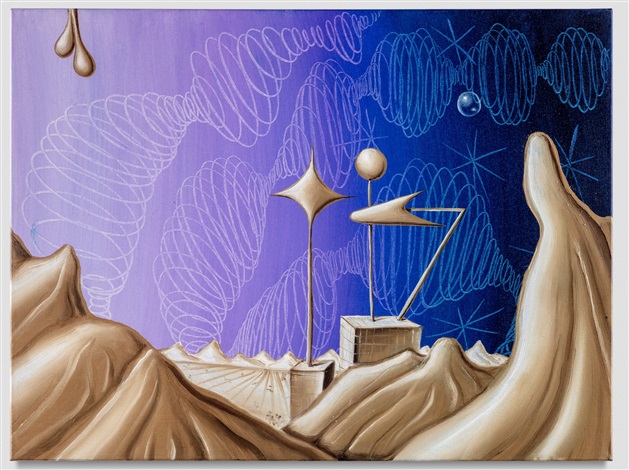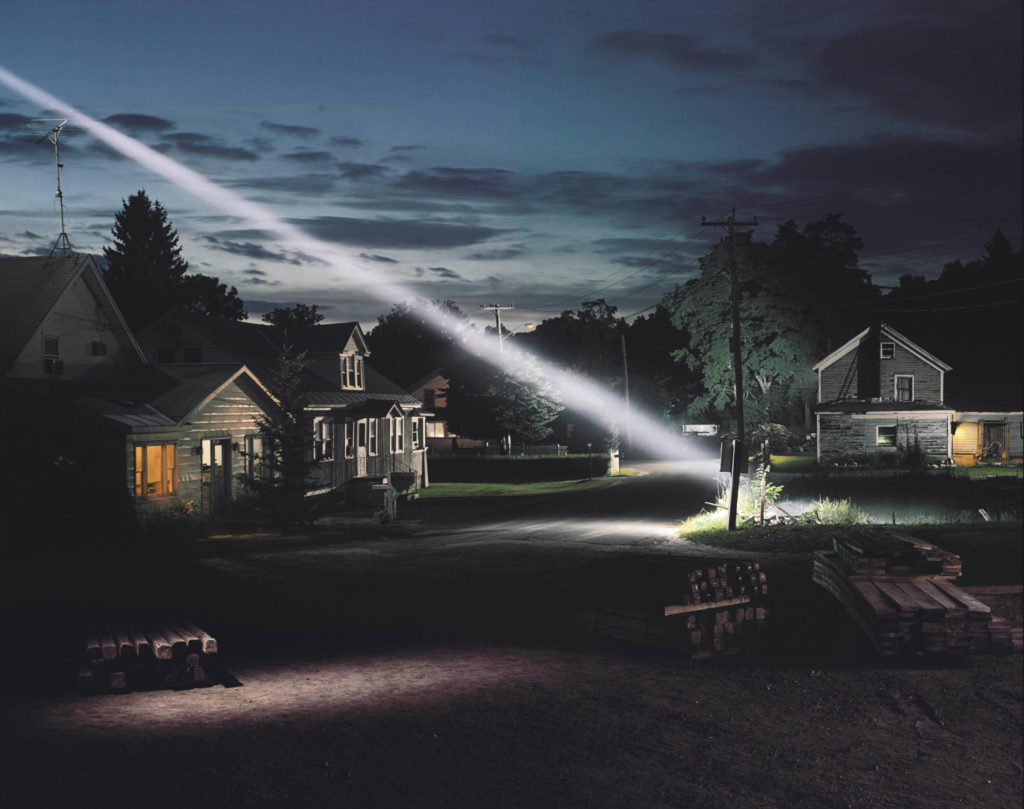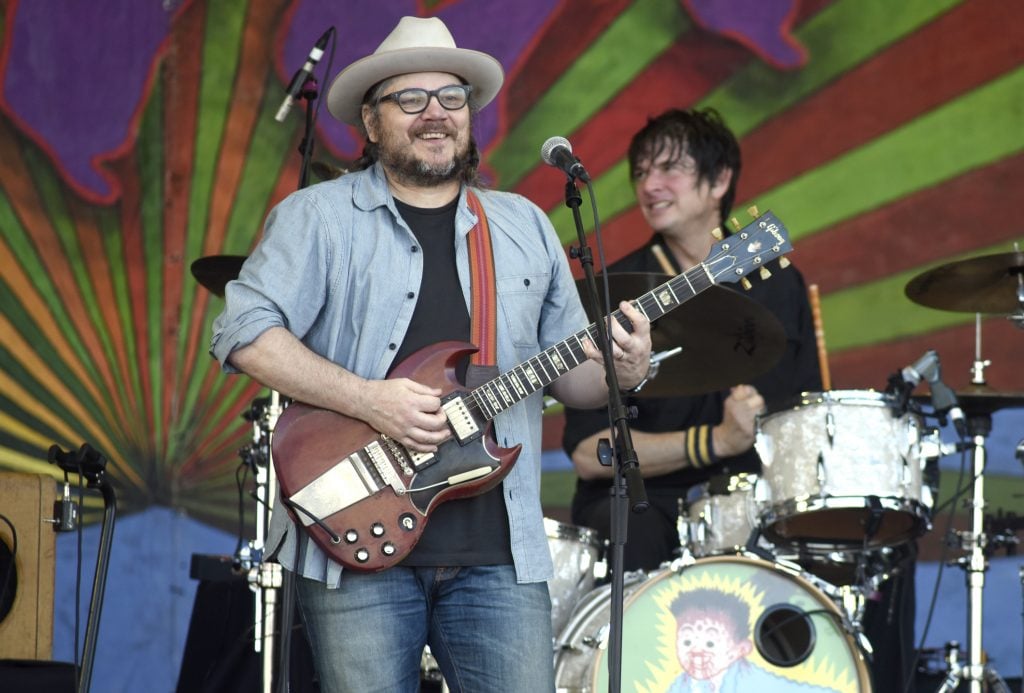Every Monday morning, Artnet News brings you The Gray Market. The column decodes important stories from the previous week—and offers unparalleled insight into the inner workings of the art industry in the process.
This week, returning to the music industry for precedent…
‘A SINCERE BUT INSUFFICIENT GESTURE’
In late June, indie-rock elder statesman Jeff Tweedy, the white founder and frontman of the critically acclaimed band Wilco, went public with a commitment to donate five percent of his songwriting revenue in perpetuity to nonprofit organizations dedicated to racial justice. With his own financial commitment as a potential model, he also called on fellow artists and other power brokers to work with him on creating an ongoing reparations system in a music industry “built almost entirely on Black art” while “the wealth that rightfully belonged to Black artists was stolen outright.”
In the full statement, Tweedy described his pledge as “a sincere but insufficient gesture” toward redressing decades of wrongdoing. Even if others judge his description accurate, the gesture still appears to be a unique one. As of publication time, I’d seen no one else in music step forward to begin immediately funneling a set percentage of earnings toward the Black Lives Matter movement on an ongoing basis.
And while we wait to see whether Tweedy will remain a (middle-aged white) man apart in his own industry, his example begs the question: Would any white contemporary artists or art-market figures follow his lead?
Before I swim deeper into that question, additional context is in order. Tweedy is hardly the only person taking action to combat systemic racism in modern music. Last Tuesday, Ben Sisario of the New York Times put together a valuable roundup of moves that have been made by musicians, record labels, executives, and equipment manufacturers in the roughly one month since the struggle for civil rights erupted into the forefront of the American consciousness again. The starriest of these is the newly formed Black Music Action Coalition, a multiracial group of executives and artists from all tiers of the hierarchy, led by an all-Black board, seeking to eliminate racial inequities throughout the industry. (Somewhat surprisingly, Tweedy was not among the coalition’s 200-plus artist-signatories by publication time.)
In short, actions by other parties may ultimately overshadow anything Tweedy and his own hoped-for infrastructure manage to achieve. Still, I think it’s noteworthy to see any white artist permanently put their money up in the name of reparations—especially an older, less famous one whose material incorporates Black musical traditions far less obviously than, say, a megawatt success like Justin Timberlake or Eminem. And it’s the modest glow of Tweedy’s star in the music galaxy of 2020 that makes his example so tantalizing for contemporary art.

Kenny Scharf, Las Venus (2000). Courtesy of Rosenfeld Gallery.
PARALLEL LIVES
Finding an accurate contemporary-artist comp to Jeff Tweedy is a slippery project. Given the myriad differences between the music business and the art business, I don’t think it’s right to focus on the size of the bankroll. Tweedy has allegedly amassed about $9 million in assets according to the (admittedly dubious) website Celebrity Net Worth; similar financial info about contemporary artists just isn’t publicly available beyond vastly richer blue-chip names like Damien Hirst, Jeff Koons, and David Hockney. (If you’re wondering, the same site contends those dudes are worth $300 million, $200 million, and $150 million, respectively.)
More importantly, I think it would send the wrong message to suggest millionaires are the only white people who should seriously think about reparations. If the payments don’t entail an actual sacrifice by the payer—meaning, their own life isn’t made at least somewhat less comfortable as a result—then, to a certain extent, they’re missing the point.
So let’s try to draw out this comp with non-financial markers. Tweedy is a 52-year-old, genre-bending singer-songwriter and bandleader who has been consistently making a living from his craft and receiving praise from (mostly white) critics since the late 1980s. He’s been nominated for nine Grammys, winning Best Americana Album as a solo artist in 2010 and Best Alternative Music Album with Wilco in 2006. His biggest commercial success was the 2001 Wilco record Yankee Hotel Foxtrot, which went gold by virtue of selling more than 500,000 copies.
But 2001 was essentially a lifetime ago in the zeitgeist. Tweedy is, to use a music-nerd term, kind of a deep cut for American culture at large today—at least outside of his home state of Illinois, where friends of the Gray Market report he’s still considered a divine being, and the homes of Gen X and late millennial dads in neighborhoods like Park Slope and Silver Lake, where I’m confident Yankee Hotel Foxtrot vinyl is currently as easy to find as exasperation at what a poor return on investment the online-only version of private school has turned out to be.
In fact, I’d guess that most people under the age of 35 who know Tweedy’s work probably know it as background music thanks to the “hundreds” of times Wilco says they have licensed their songs for use in movies, TV shows, and commercials. That’s not a slam, by the way; it’s just my read of his business.
So what does all that add up to in terms of possible contemporary-artist parallels? The best comps I’ve been able to conjure are people like Kenny Scharf, Rob Pruitt, and maybe Gregory Crewdson: white American men in their 50s who reached maximum heat in the late ‘90s or early 2000s, but who have proven their staying power by showing in respected galleries and museums for multiple decades, selling work in the traditional system at a sustainable clip, and also penetrating pop culture in a kind of ambient way.
Before I go any further, I just want to emphasize: I am not saying these three artists should be thinking about reparations more urgently than any of their peers (or any other white people in general). I’m only saying their careers seem to map fairly well onto Tweedy’s by the strictest, most literal criteria I can manage. And when you look at the details of Tweedy’s reparations pledge, what I just mentioned about ambient penetration into pop culture becomes especially important.

Rob Pruitt. Photo courtesy of the Peanuts Global Artist Collective.
ADVANCED MATH
A close read of what Tweedy is promising reveals that he’s siphoning off a fraction of a fraction of his business: five percent of his songwriting revenue. If you really want to descend into the underbrush of what that means, I hacked a beginner’s path in a previous Gray Market. But setting aside the brambly question of how many of his master recordings Tweedy owns, the main point is that songwriting revenue excludes money made from ticket sales and merchandise.
Don’t get it twisted, though; songwriting revenue alone can still be significant, especially while concerts remain cryogenically frozen until some indeterminate point in the future. Royalties have to be paid to the artist any time a record gets purchased (in analog and digital formats alike) or streamed, played or performed in a public setting (including on the radio, in a sports arena, or at another artist’s concert), or used as a soundtrack for moving images (meaning licensed for a movie, TV show, or commercial).
This means that the music industry continually pays prominent artists for their previous recordings rather than forcing them to produce new work to keep the lights on. In fact, apart from touring, licensing is to my knowledge the most lucrative revenue stream for artists in music during the streaming era. Which is why someone like Tweedy can continue to generate a potentially meaningful amount of cash for racial-justice organizations like the Movement for Black Lives and Black Women’s Blueprint—two nonprofits his announcement identified as pending recipients of his personal reparations initiative—even though his career reached its commercial apogee 15 to 20 years ago.
Contemporary artists don’t have this benefit—at least, not if they rely entirely on selling works on the primary market. Everyone reading this column already knows how unforgiving a business plan that is in most cases. Damming off five percent of sales you’re usually only receiving half of anyway might be untenable for many artists beneath the star tier… but it would undoubtedly be more manageable for artists who have built profitable alternative revenue streams.
Artists like Scharf, Pruitt, and Crewdson have developed such supplements to their main studio practice, and these sidelines have contributed mightily to earning them an audience outside the upper crust of the traditional art market. Scharf’s playful, hyper-saturated cartoon figures have appeared on clothes from the GAP, Zara, Louis Vuitton, and others; a Nickelodeon blimp; murals commissioned by cities, hospitals, and businesses around the world; and as any Los Angeles resident can attest, his ongoing series of Karbombz! automotive paint jobs.
Pruitt’s confectionary conceptual practice has filtered out to the wider world via collaborations with J Brand jeans and Jimmy Choo x Barneys; murals of Charlie Brown and friends he created as a part of the Peanuts Global Artist Collective in 2018; and his own Swag Shop, which sells sculptural editions, T-shirts, and other branded merch for prices as low as $100.
Crewdson’s high-production value, cinematically surreal photography crept into our collective bloodstream through the commercial side of his output, which included the first-ever New York Times Magazine photo portfolio, promo imagery for the HBO drama Six Feet Under, and a pre-existing artwork that became a revered album cover for indie-rock legends Yo La Tengo.

Gregory Crewdson’s Untitled (Ray of Light) (2001). Courtesy of Christie’s.
In theory, the most Tweedy-like reparations a white contemporary artist of this caliber could make would be to pledge a percentage earned from one aspect of their holistic business—either commissions from gallery sales or alternative revenue streams, but not both. Yet even Tweedy suggests he might not be doing enough himself, meaning that benchmarking off his exact commitment could be a mistake.
This leads to the central dilemma of reparations: What qualifies as “enough” money for any white person to give back for the advantages gained by hundreds of years of systemic racism?
I’m not the right person to answer that question. I know that we white people should not be randomly Venmoing five bucks to our Black acquaintances, exes, and even total strangers in a halfhearted attempt to assuage our guilt about the nation’s cruel history. (Seriously, this mortifying activity is a real trend happening right now.) But in the absence of an official nationwide reparations system conceived and approved by a cross-section of Black leaders and scholars, quantifying “enough” to give back is something every white American can only do by their own moral and financial compass.
What I can say is that I’ve come to believe in the necessity of finding an answer and acting on it across all industries. Regardless of how “insufficient” Tweedy’s personal attempt may or may not be to Black Americans who hear about it, it does provide a case study for contemporary artists. That has value in and of itself—unless the white art world quietly decides that this matter is just (to invoke a deep cut of Tweedy’s own) someone else’s song.
[Stereogum]
That’s all for this week. ‘Til next time, remember: for better and worse, nothing is more American than having to do it yourself.










